
Major General Sir Thomas Makdougall Brisbane, 1st Baronet,, was a British Army officer, administrator, and astronomer. Upon the recommendation of the Duke of Wellington, with whom he had served, he was appointed governor of New South Wales from 1821 to 1825.

William H. Cabell was a Virginia lawyer, politician, plantation owner and judge aligned with the Democratic-Republican party. He served as Member of the Virginia House of Delegates, as Governor of Virginia, and as judge on what later became the Virginia Supreme Court. Cabell adopted his middle initial in 1795—which did not stand for a name—to distinguish himself from other William Cabells, including his uncle, William Cabell Sr.

The Thomas Viaduct spans the Patapsco River and Patapsco Valley between Relay, Maryland and Elkridge, Maryland, USA. It was commissioned by the Baltimore and Ohio Railroad (B&O); built between July 4, 1833, and July 4, 1835; and named for Philip E. Thomas, the company's first president. It remains the world's oldest multiple arched stone railroad bridge.

The Hooper Building is a historic commercial building in downtown Cincinnati, Ohio, United States. Built to a design by a master architect, it is named for an executive of its first occupant, and it has been named a historic site.

The Dewitt Log Homestead is a historic building near Oxford, Ohio, listed in the National Register on 1973-04-13.
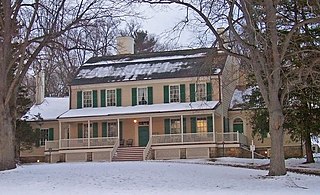
The John Jay Homestead State Historic Site is located at 400 Jay Street in Katonah, New York. The site preserves the 1787 home of statesman John Jay (1745–1829), one of the three authors of The Federalist Papers and the first Chief Justice of the United States. The property was designated a National Historic Landmark in 1981 for its association with Jay. The house is open year-round for tours.
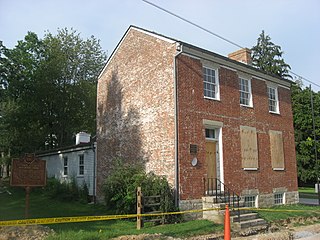
The Grant Boyhood Home is a historic house museum at 219 East Grant Avenue in Georgetown, Ohio. Built in 1823, it was where United States President and American Civil War General Ulysses S. Grant (1822–85) lived from 1823 until 1839, when he left for the United States Military Academy at West Point. In 1976, the house was listed on the National Register of Historic Places. Nine years later, it was designated a National Historic Landmark. It is now owned by a local nonprofit organization as part of a suite of Grant-related museum properties in Georgetown.
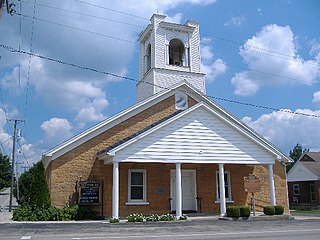
West Union Presbyterian Church is a historic congregation of the Presbyterian Church (U.S.A.) in the village of West Union on the southern edge of Ohio. Formed at the turn of the nineteenth century, it worships in an early nineteenth-century building constructed by a future governor of Kentucky, and it counted among its earliest members a governor of Ohio. The building has been named a historic site.

Bethel Methodist Church is a historic Methodist church building in rural Clermont County, Ohio, United States. Built in the 1810s under the leadership of one of Ohio's earliest Methodist preachers, it has survived the death of its congregation, and it remains in use for community activities. Together with its cemetery, the building continues to be used occasionally, and it has been named a historic site.

The Whiting Homestead is a historic house at 291 North Main Street in West Hartford, Connecticut. Built about 1790, it is a fine example of late colonial architecture, with many original interior features. The house was listed on the National Register of Historic Places on August 3, 1987.
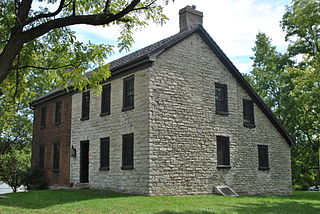
The Lewis Kemp House is a historic pioneer farmstead in the city of Dayton, Ohio, United States. Built for one of the area's earliest residents, it was a religious center in its first years, while later years saw its expansion to its present form. Now located among much newer houses, it is Dayton's oldest surviving residence, and it has been named a historic site.

The Rombach Place is a historic house in the city of Wilmington, Ohio, United States. Built in the first third of the nineteenth century, it was home to a family that produced two prominent national politicians. No longer used as a residence, the house is now a museum, and it has been named a historic site.

The John Perry Homestead is a historic house at 135 Dooe Road in Dublin, New Hampshire. The 1+1⁄2-story Cape style farmhouse was built c. 1795 by John Perry, son of Ivory Perry who lived nearby. The house has been only minimally altered since its construction, with the replacement of windows and the addition of gable dormers being the most significant. The house was listed on the National Register of Historic Places in 1983.
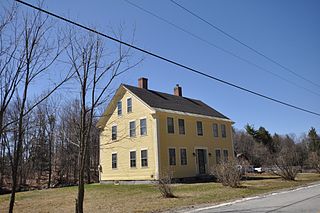
The John Richardson Homestead is a historic house on Hancock Road in Dublin, New Hampshire, United States. Built about 1798, it is a well-preserved example of a modest Federal period farmhouse. The house was listed on the National Register of Historic Places in 1983.
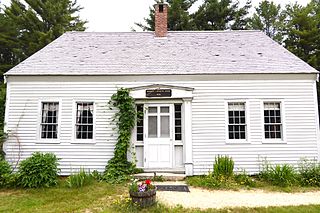
The Russell/Colbath House is a historic house on the Kancamagus Highway in Albany, New Hampshire. It is located in the White Mountain National Forest, and is operated as a museum by the United States Forest Service. Built about 1831, it is the only surviving early homestead in the Swift River valley. It was listed on the National Register of Historic Places in 1987.

The Governor Jonas Galusha Homestead is a historic homestead at 3871 Vermont Route 7A in Shaftsbury Center, Vermont. Built in 1783 and enlarged in 1805, it is a well-preserved example of Federal period architecture. It was built by Jonas Galusha, Vermont's fifth governor and a leading politician and military figure of southern Vermont for many years. It is now home to the Shaftsbury Historical Society, and was listed on the National Register of Historic Places in 1979.

The Governor Smith Homestead is a historic house on South Main Street in Sharon, Connecticut. Built between 1765 and 1777, this large stone house has been a distinctive presence on the Sharon Green for over 200 years. It was for many years the home of John Cotton Smith, Governor of Connecticut during the War of 1812, and a nephew of the house's builder, Simeon Smith. The house was listed on the National Register of Historic Places in 1982, and was included in the Sharon Historic District in 1993.
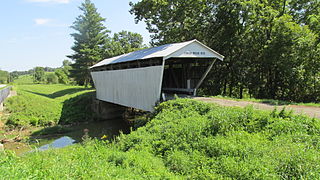
The Kirker Covered Bridge, near West Union, Ohio, was built in the late 1860s. It was listed on the National Register of Historic Places in 1975.
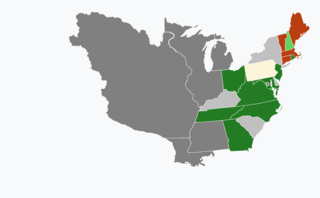
United States gubernatorial elections were held in 1805, in 13 states.
Sobel, Robert, and John Raimo, eds. Biographical Directory of the Governors of the United States, 1789-1978, Vol. 3, Westport, Conn.; Meckler Books, 1978. 4 vols.




















